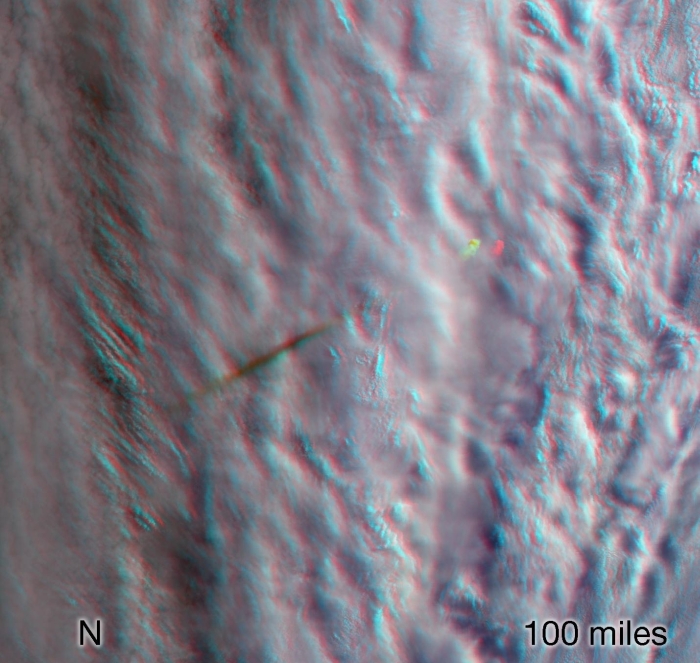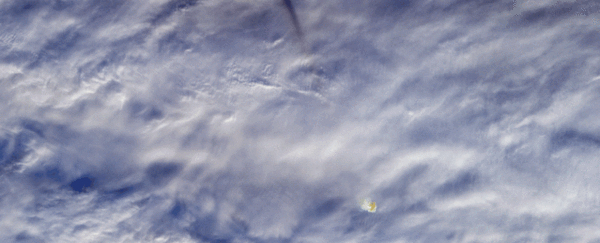A meteor that exploded above the clouds over the Bering Sea in December was caught on camera by NASA's eyes in the sky.
Just minutes after the meteor burst apart on 18 December 2018, the Multi-angle Imaging SpectroRadiometer (MISR) instrument aboard the Terra satellite captured the scene in a sequence of images.
Clearly visible is the shadow of the bolide (or meteoric explosion) seen as a dark streak on the clouds below.
If you look closely, you can also spot the fiery orange cloud left behind from the meteor super-heating the air as it passed through at a speed of 115,200 kilometres per hour (71,600 miles per hour).
 Got your anaglyph 3D glasses? (NASA/GSFC/LaRC/JPL-Caltech, MISR Team)
Got your anaglyph 3D glasses? (NASA/GSFC/LaRC/JPL-Caltech, MISR Team)
The explosion was the third most powerful we've recorded since 1900, exploding with the equivalent of 173 kilotons of TNT - over 10 times the power of the Hiroshima atomic bomb (15 kilotons).
It comes in behind the 2013 Chelyabinsk explosion (440 kilotons) and the Tunguska event in 1908 (at least 3 megatons).
However, since it occurred in a remote location, no one was around to see it.
That's good, though - it also means no one was around to be endangered by it, unlike the Chelyabinsk meteor, which injured over 1,200 people, mostly from glass flying from shattered windows.
A video showing the smoke trail from the #Meteor over the Bering Strait last December, produced using data from @JMA_kishou's #Himawari satellite.
— Simon (@simon_sat) March 19, 2019
The orange meteor trail in the middle, shadow above-left.
Hi-res copy: https://t.co/EXn8sFb556 pic.twitter.com/X54InkvMnl
Bolides are actually pretty common, although they're usually a lot smaller. NASA has logged 775 atmospheric fireballs since 1988, most of them over the ocean.
